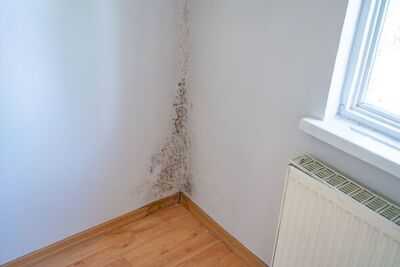As the colder months set in and windows remain shut, damp and condensation can build up in rooms where steam and poor airflow combine. Experts say this creates the perfect conditions for mould, which can damage property and pose health risks if left untreated.
Now, a new survey has revealed the top five mould hotspots in British homes, and suggests that millions of people are not cleaning the worst-affected area at all. Bathrooms were named the number one trouble spot, with common build-ups in shower corners and tile grout. Kitchen window sills and the areas behind sinks also ranked high due to steam from cooking and washing up.
Bedrooms, especially behind wardrobes and other furniture pushed against external walls, came next, followed by window frames and sills. Basements and cellars rounded out the top five.
The research carried out by experts at Shark Clean also found that 15% of people never clean their shower area, which is the most common place for mould to grow.
With around 54 million people living in private households in the UK, that equates to roughly 8.14 million homes potentially harbouring untreated bathroom mould.
Some respondents even admitted they believed showers and bathtubs "clean themselves", while others said they had never cleaned their shower curtain or glass door.
As mould thrives on moisture and warmth, poor ventilation is one of the biggest causes.

The experts say opening windows while showering and wiping down wet surfaces afterwards are the simplest ways to prevent it from taking hold.
If your bathroom doesn't have a window, as is common in many flats, using a small dehumidifier can help reduce moisture in the air.
People are also being urged to use anti-mould sprays once a week, especially in tile grout areas where spores can easily develop.
A DIY solution using equal parts white vinegar and water can also work as a preventative measure.
Once mould appears, cleaning becomes tougher, but there are ways to remove it.
Shark Clean's in-house microbiologist, Salomé Gião, shared some tips to help households stay on top of mould build-up during the winter months.
She said: "If mould does appear on your grout in the bathroom, there are a few ways to manage its growth. Make a baking soda and white vinegar paste and let it sit for 15 minutes on the affected area before scrubbing away with a sponge.
"For more stubborn patches, choose either a bleach solution or hydrogen peroxide (bleach alternative) and either spray or rub onto the area, leave for 15 minutes and then wash away, and spray with an anti-mould sealant."
Top 5 mould hotspots in UK homes:
You may also like

Martin Lewis MSE reveals £70 trick for cheap PS5 games this Christmas

Australia vs India, 3rd T20I- Who will win today AUS vs IND match?

The little fairytale UK seaside village so perfect it looks frozen in time

Kerala youth held for 'hacking' sensitive data accessible to police and telecom agencies

Actor Parthiban presents momento to 'Ustaad Bhagat Singh' director Harish Shankar







